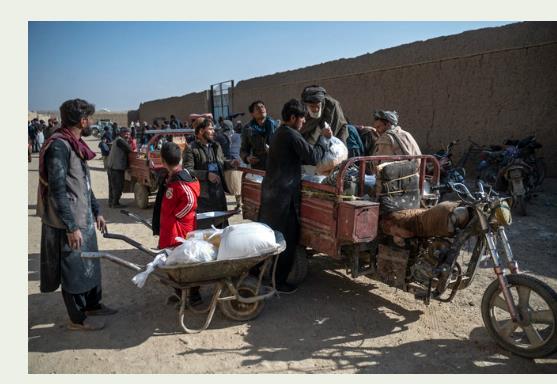
Last weekend’s attack on a wedding hall in Kabul, which killed 80 people and wounded nearly 200, is a tragic reminder of the threat posed by Daesh in Afghanistan — and the broader region.
It wasn’t the first mass-casualty attack carried out by the group in Afghanistan, and it won’t be the last. Since the Daesh central leadership formally announced the presence of a new affiliate in Afghanistan in early 2015, the group has authored many bloody assaults. Many are sectarian in nature and target Afghanistan’s Shiite Muslim minority, while others — such as an attack on a Kabul military hospital in 2017 — target the state.
What is particularly concerning about Daesh in Afghanistan is its resilience. Despite many constraints — including an unfriendly militant environment dominated by groups aligned with Daesh’s Al-Qaeda rival; an inability to seize large amounts of territory; and a relentless campaign of US-Afghan airstrikes that target it practically every day — the group has retained the ability to strike in spectacular fashion.
But Daesh is not only a challenge to a nation buffeted by an 18-year-long US-led war. It is also a challenge to the peace that Washington is fervently pursuing through negotiations with the Taliban.
Unsurprisingly, Daesh is not involved in any of the current peace negotiations. It is much more hard-line than the Taliban. It is irreconcilable to the core, and it would never agree to participate in a reconciliation process in Afghanistan. If the Taliban agreed to a troop withdrawal deal with Washington, and even if it agreed to a comprehensive peace settlement with Kabul, Daesh would just keep on terrorizing Afghanistan.
Additionally, a Taliban peace accord would strengthen Daesh. Many hard-line Taliban members, unhappy about a peace deal that they oppose, would throw their allegiances to Daesh. It has already attracted several splinter factions of other terrorist organizations — from the Pakistani Taliban to the Islamic Movement of Uzbekistan — to its cause. A fresh supply of ex-Taliban recruits would help it in a big way, because they would presumably be Afghans and therefore familiar with the country’s terrain.
While Daesh is a rival of the region’s major terror groups, it has proven adept at forming opportunistic partnerships.
Michael Kugelman
The Daesh wedding hall attack is also a reminder of the dangers that the group poses to broader South Asia. This wasn’t the first time it had carried out a mass-casualty attack on a soft target in the region. Only a few months ago, the group claimed a series of attacks on churches in Sri Lanka. A few years earlier, Daesh was involved in a deadly assault on a popular bakery in Dhaka, Bangladesh.
This isn’t to overstate the threat posed by Daesh in South Asia. It confronts the same constraints in the region that it does in Afghanistan: A militant environment dominated by terror groups that are its rivals, not friends; an inability to capture territory; and the reality of constantly being in the cross hairs of state security forces. Indeed, Bangladeshi officials cracked down hard on Daesh after the Dhaka bakery attack and the group has since staged fewer major attacks in Bangladesh.
Still, several factors ensure that Daesh will remain a threat in South Asia.
First, while it is a rival of the region’s major terror groups, it has proven adept at forming opportunistic partnerships. In Pakistan, for example, it has carried out several attacks with a faction of Lashkar-e-Jhangvi, a group that, like Daesh, tends to be sectarian in its targeting. Additionally, it has found local enablers willing to help it carry out attacks. Daesh staged the Dhaka bakery attack with the assistance of Jamaat-ul-Mujahideen Bangladesh, a potent terror group. Similarly, it worked with local extremists in Sri Lanka to pull off the church bombings.
Second, now that Daesh has lost its “caliphate” in Iraq and Syria and is on the defensive, it is looking for ways to demonstrate its continued clout and relevance. Blowing things up — which generates extensive media coverage and terrifies local communities — is a useful tactic in this regard. The group has willing facilitators at its disposal in the form of all the South Asian nationals who went to fight for Daesh in Iraq and Syria and are now returning home. The number of returning fighters from South Asia is not huge, but it is not inconsequential. The Soufan Group has estimated, in separate 2015and 2017appraisals, that there have been more than 30 fighters who traveled to the Middle East from Sri Lanka, 60 from India, 200 from the Maldives, and 650 from Pakistan.
A key recent lesson to emerge from international security is that one should never declare the demise of a potent international terrorist syndicate. The death of Al-Qaeda was proclaimed too soon. So let’s not assume that, just because Daesh is down, it must be out. Its bloody footprint in Afghanistan and broader South Asia reinforces just how potent it continues to be












